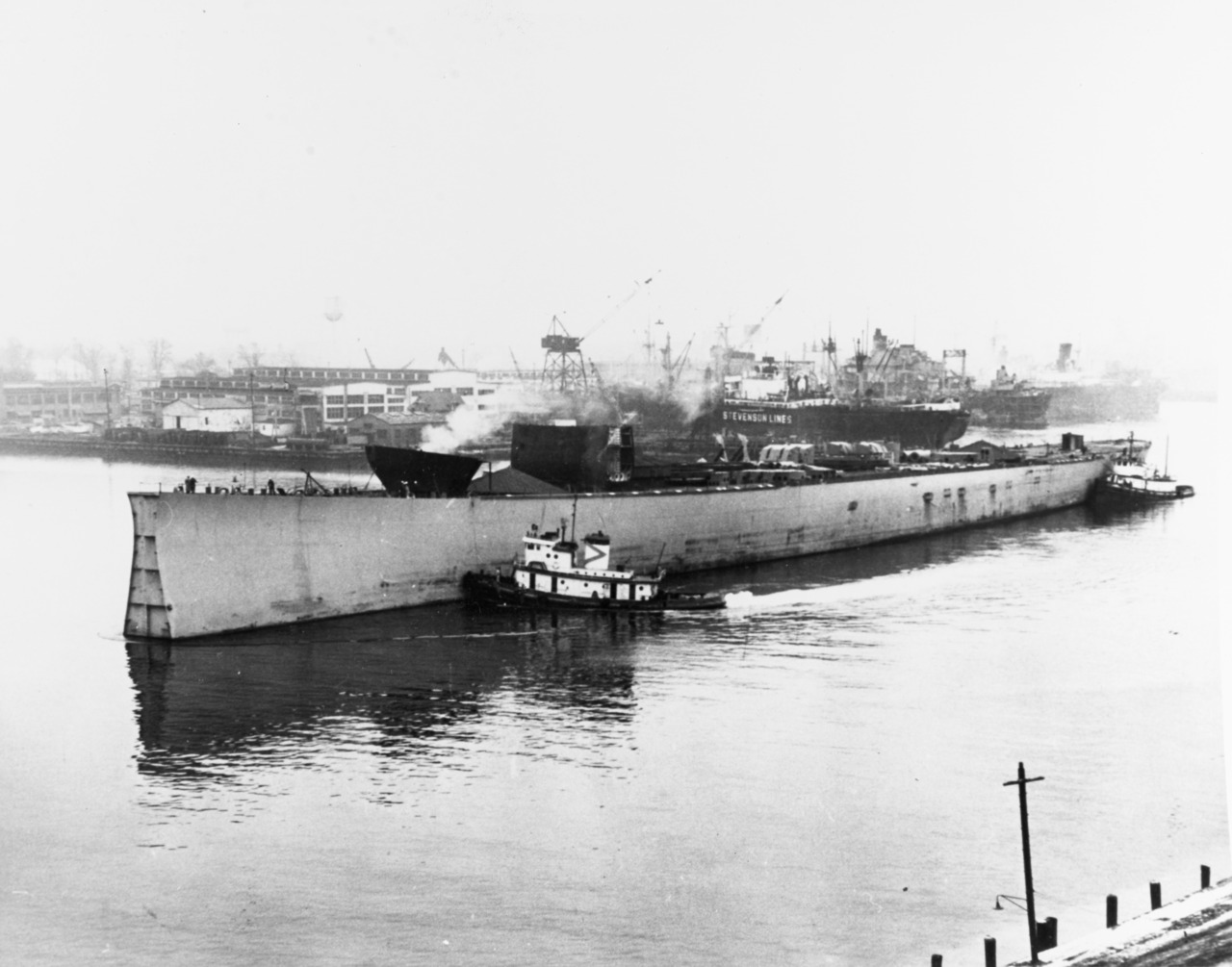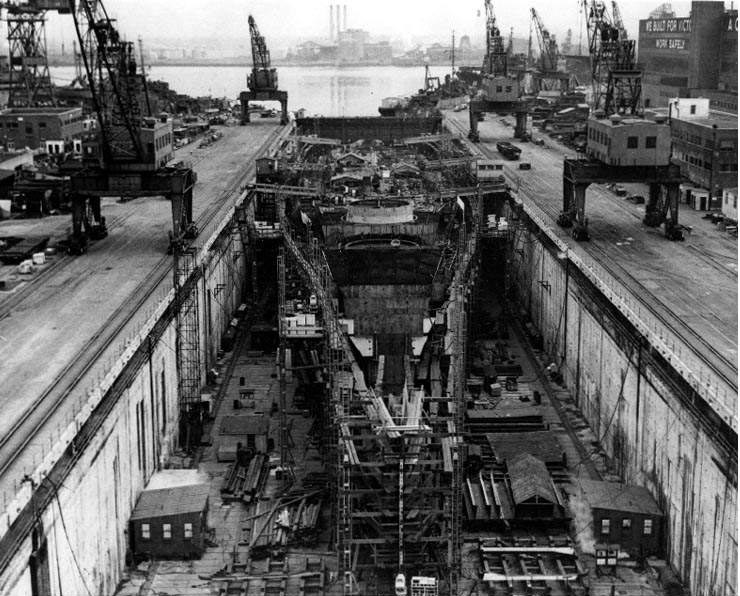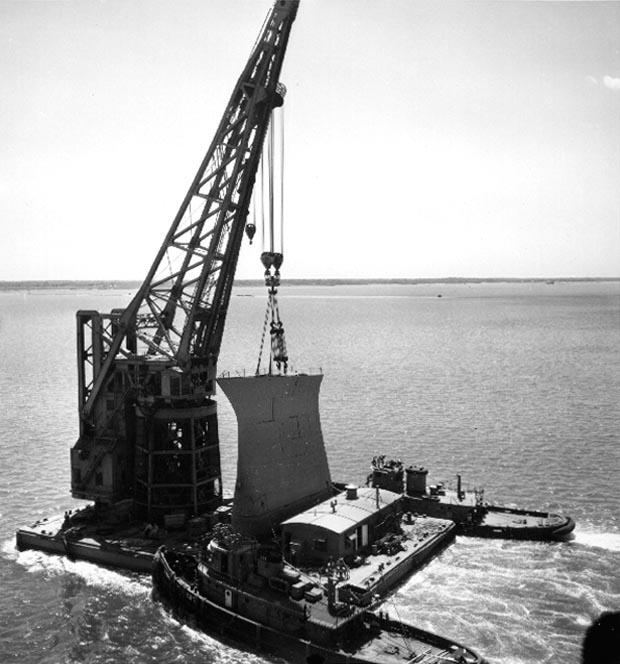The USS Kentucky (BB-66), an Iowa-class battleship, was left incomplete at the end of World War II due to shifting priorities towards aircraft carriers and submarines.

Despite several proposals to convert her into a guided missile battleship or other roles during the Cold War, these plans were never realized, and she remained unfinished.
Ultimately, the Kentucky’s hull was sold for scrap in the 1958, marking the end of her journey without having served actively in the U.S. Navy.
Design of the USS Kentucky
The Kentucky was to be the sixth ship of her class, following her sister ships USS Iowa (BB-61), USS New Jersey (BB-62), USS Missouri (BB-63), USS Wisconsin (BB-64), and another unfinished Iowa, USS Illinois (BB-65).
The Iowa-class battleships were designed during World War II to meet the demanding requirements of high speed, heavy armament, and robust armor protection.
The design of the Iowa-class began in the late 1930s, with the aim of creating a fast battleship capable of keeping pace with aircraft carrier task forces while providing powerful gunfire support for fleet operations.
The design emphasized speed, armor, and armament, balancing these three critical aspects to produce a formidable battleship.
With a designed speed of over 30 knots, the Kentucky was intended to outrun many of the ships that could outgun her, and outgun any ship that could outrun her.
 The incomplete hull of USS Kentucky, still under construction in 1946.
The incomplete hull of USS Kentucky, still under construction in 1946.
The main battery would have consisted of nine 16-inch (406 mm) guns in three triple turrets, capable of firing shells up to 20 miles, offering immense firepower.
Secondary armament included twenty 5-inch (127 mm) guns, anti-aircraft guns, and later, missile systems were considered for installation to enhance air defense capabilities.
Armor protection was a critical element of the Kentucky’s design, with a main belt armor thickness of up to 12.1 inches and deck armor up to 6 inches thick.
This armor scheme was designed to protect against shells from enemy battleships and cruisers, ensuring the ship’s survivability in a gunfight.
The design also included underwater protection against torpedoes and mines, incorporating a sophisticated system of voids and liquid loading to absorb the shock of underwater explosions.
A Troubled Development
The keel of the USS Kentucky (BB-66) was laid down at the Norfolk Navy Yard in Virginia on March 6, 1942. However, its construction encountered significant delays and interruptions.
The shifting priorities of World War II, especially the focus on aircraft carriers and submarines, led to the suspension of battleship construction.
As the war progressed, the importance of battleships in naval warfare diminished in favor of air power and the strategic mobility offered by aircraft carriers. This shift resulted in the USS Kentucky’s construction being halted before completion.
By the end of the war, the Kentucky was still incomplete, and the advent of nuclear weapons and missile technology further questioned the role of traditional battleships in modern naval strategy.
Despite proposals to complete the Kentucky as a guided missile battleship or to incorporate other modernizations, these plans were never realized.
 The hull of USS Kentucky being moved to make way for the Missouri.
The hull of USS Kentucky being moved to make way for the Missouri.
After multiple delays followed by periods of slow work carried out to finish the ship, work halted again in January, 1950.
This time it was to make room for repairs to be made to her sister ship, USS Missouri, which was damaged after she had run aground.
The Fate of the USS Kentucky
After remaining unfinished in the mothball fleet at the Philadelphia Naval Sipyard, parts of the USS Kentucky would begin to be cannibalized.
 A crane barge transporting the bow of USS Kentucky.
A crane barge transporting the bow of USS Kentucky.
Most notably, her bow was used to repair her sister ship, the USS Wisconsin (BB-64), which had been damaged in a collision with the destroyer USS Eaton in May, 1956. This decision marked a turning point in the Kentucky’s history, as it effectively ended any possibility of the ship being completed in any form.
In June, 1958, the decision was finally made to scrap the USS Kentucky. The remaining hull and parts were sold for scrap to the Boston Metals Company for over 1.1 million dollars. This closed the chapter on what could have been the last of the great American battleships.